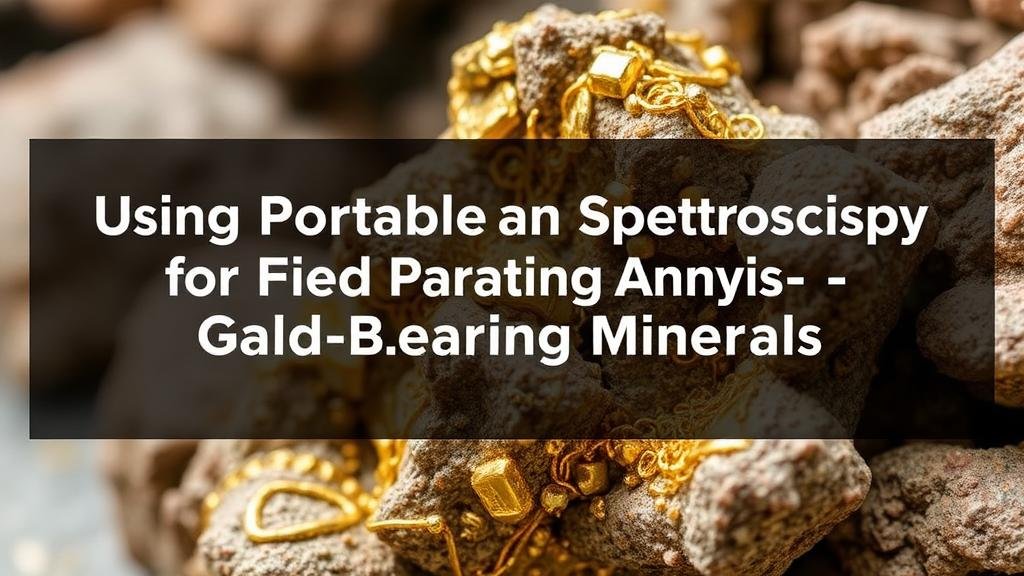Using Portable Raman Spectroscopy for Field Analysis of Gold-Bearing Minerals
Using Portable Raman Spectroscopy for Field Analysis of Gold-Bearing Minerals
In the realm of mineral exploration and processing, the ability to rapidly and accurately identify gold-bearing minerals in the field is crucial. Portable Raman spectroscopy has emerged as a powerful tool for geologists and mining professionals to achieve this goal. This article explores the principles of Raman spectroscopy, its applications in gold mineralogy, and the advantages it holds over traditional analytical techniques.
Understanding Raman Spectroscopy
Raman spectroscopy is a non-destructive analytical technique that relies on the inelastic scattering of monochromatic light, typically from lasers. When light interacts with molecular vibrations, it produces a spectrum that provides information about the molecular structure and composition of a sample. The energy shifts observed in the scattered light correlate to specific molecular vibrations, allowing for the identification of various materials.
Portable Raman spectrometers have been adapted for field studies, offering analysts the capability to perform rapid mineral assessments in situ. This is particularly advantageous when exploring remote or difficult-to-access locations.
Applications in Gold Mineralogy
Gold occurs within a variety of host minerals, each affecting gold extraction processes differently. Portable Raman spectroscopy is adept at identifying these minerals rapidly, which is essential for assessing potential mining sites. Common gold-bearing minerals include:
- Pyrite (FeSâ‚‚) – Often referred to as fools gold, pyrite can provide clues to the presence of gold deposits.
- Arsenopyrite (FeAsS) – Another common host of gold, its identification can indicate significant mineral deposits.
- Sulfide minerals – Various sulfide minerals often accompany gold and warrant analysis to understand the mineralogical context.
By accurately identifying these minerals, mining companies can make informed decisions about resource allocation and extraction strategies, which directly impacts economic viability.
Advantages of Portable Raman Spectroscopy
Utilizing portable Raman spectroscopy for field analysis presents several advantages, including:
- Speed: Analysis can be performed within minutes, allowing for real-time decision-making.
- Non-destructive Testing: Samples remain intact, which is vital for preserving geological integrity and allowing for further testing.
- Minimal Preparation: Samples often require little to no preparation, enabling quick assessments in various environmental conditions.
- High Sensitivity: Capable of detecting trace amounts of minerals, which is essential when analyzing low-grade ores.
Case Studies and Real-World Applications
Several case studies underscore the effectiveness of portable Raman spectroscopy in gold exploration:
- Case Study 1: In a remote mining district in South America, geologists employed portable Raman spectrometers to identify arsenopyrite and pyrite. The ability to distinguish these minerals onsite led to the strategic re-evaluation of the ore body and significantly improved extraction strategies.
- Case Study 2: An Australian exploration company utilized portable Raman spectroscopy during a site assessment. rapid identification of gold-bearing sulfides facilitated quicker drilling decisions, ultimately enhancing the efficiency of their exploration campaign.
Challenges and Limitations
Despite its considerable advantages, portable Raman spectroscopy does have limitations. These include:
- Fluorescence: Some samples may fluoresce under laser excitation, which can obscure Raman signals.
- Sample Homogeneity: Non-homogeneous samples may yield a misleading spectrum, necessitating careful sampling.
Addressing these challenges often requires experience and adjustments in methodology, such as selecting different laser wavelengths or combining data with other analytical techniques.
Actionable Takeaways
For mining professionals considering the adoption of portable Raman spectroscopy, here are key takeaways:
- Assess the specific minerals you frequently encounter and verify that they can be accurately identified using Raman spectroscopy.
- Invest in training for personnel to ensure they can effectively operate spectrometers and interpret results.
- Integrate Raman spectroscopy with other analytical methods to enhance data reliability and coverage.
To wrap up, portable Raman spectroscopy offers an innovative approach to the analysis of gold-bearing minerals. Its ability to facilitate immediate field assessments empowers mining professionals to make informed decisions, ultimately optimizing exploration and extraction processes. As technology advances, the integration of portable spectroscopic techniques will likely become a standard practice in mineral analysis.



